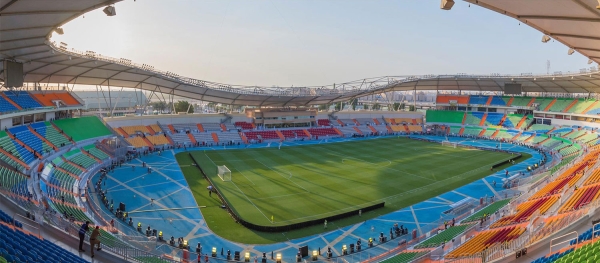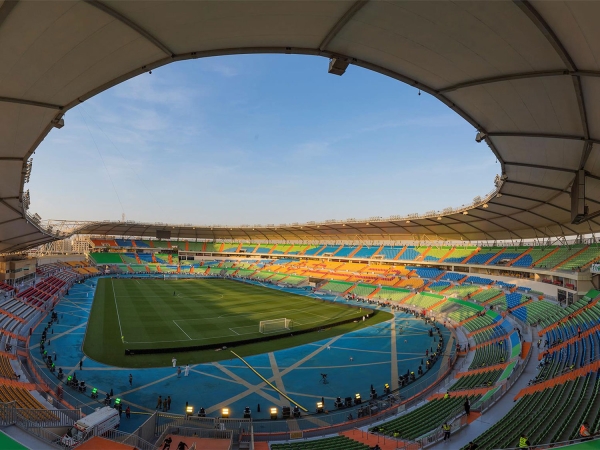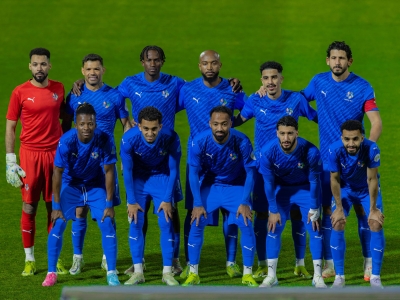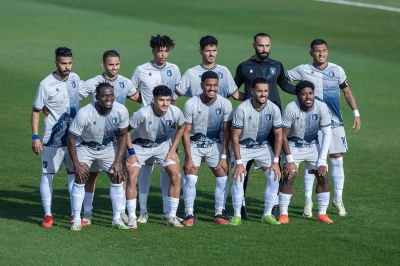


Prince Abdullah al-Faisal Stadium is a multipurpose sports facility in the Kingdom of Saudi Arabia, hosting sporting fixtures and events, under the supervision of the Ministry of Sport. The stadium is located on the southern side of Jeddah, which geographically belongs to Makkah al-Mukarramah province.
Establishment of Prince Abdullah al-Faisal Stadium
Prince Abdullah al-Faisal Stadium was founded in the 1970s during the reign of King Faisal Bin Abdulaziz Al Saud, under the name of Jeddah Youth Care Stadium until 2001, after which it took on its current name in honor of Prince Abdullah al-Faisal Al Saud and in recognition of his contributions to the service and development of Saudi sports.
Location of Prince Abdullah al-Faisal Stadium
Prince Abdullah al-Faisal Stadium is located on the southern side of the city of Jeddah, administratively affiliated with the Makkah al-Mukarramah province, specifically in al-Waziriyah District. The venue hosts local and international matches alongside 'al-Jawhara Stadium' at the King Abdullah Sports City north of Jeddah.
The stadium has a total area of approximately 340,000 mwith a capacity of about 27,000 seats, and consists of a natural grass pitch and fully unroofed stands. The stadium has recently been refurbished and expanded.
Facilities of Prince Abdullah al-Faisal Stadium
The area surrounding the Prince Abdullah al-Faisal Stadium includes a number of facilities and utilities, including an indoor gymnasium for hosting sports games for handball, basketball, volleyball, judo, and karate, among others; an indoor swimming pools, which includes the Olympic Pool and rows of spectator seats; and an array of public facilities, such as the Jeddah Youth Hostel building and its annexes, a mosque, gardens, outdoor courtyards, and parking lots.
The completion of the development of Prince Abdullah al-Faisal Stadium
On October 1, 2021, Prince Abdullah al-Faisal Stadium resumed hosting matches, including the 'Jeddah Derby' between al-Ahli SFC and al-Ittihad Club,
The Prince Mohammed Bin Salman Professional League, after completion of the stadium development works in accordance with the requirements of the International Federation of Association Football (FIFA) and the Asian Football Confederation.
The upgrade – overseen by the Ministry of Sport –raised the stadium’s capacity to 27 thousand seats and the installed a royal box in the stands, in addition to seventy-two seats reserved for persons with disabilities. Development works also included engineering improvements to the four-story royal cabin and attached facilities and services, as well as a complete overhaul of pitch and turf for the entire stadium according to approved world-class standards.
Establishment of two media centers
As part of the development of Prince Abdullah al-Faisal Stadium, two media centers were built with a capacity of 250 persons each. Additionally, two press conference rooms accommodating thirty persons, four studio rooms for sports pundits and broadcasters, and six booths for commentators were constructed. Furthermore, a press interview area (mixed zones) and two TV interview areas (flash interviews) have been established.
Regarding the participating athletes in the competitions, two dedicated wings were constructed with full facilities for referees. A new room for Video Assistant Referees (VAR) was also established, along with four wings equipped for the players' team crews. Improvements also included the entire equipping of the stadium for televised transmission with a capacity of forty-eight broadcast cabins, with a capacity of sixty cameras each, with the possibility of two TV broadcasting networks operating simultaneously.
The preparations and medical arrangements at the stadium included the establishment of dedicated medical clinics for players and sports audiences, as well as specialized rooms for doping tests. Up to 122,000 m of parking space was added outside the stadium and fifty-eight electronic gates were installed inside, spread over the stadium's eleven gates.
Related quizzes
Related articles

